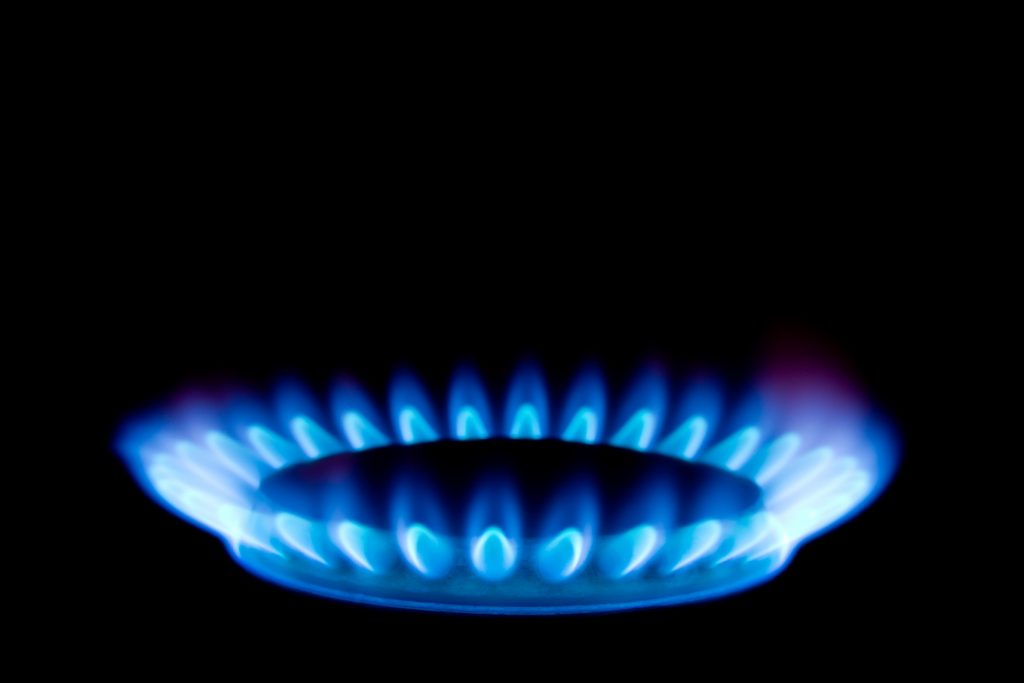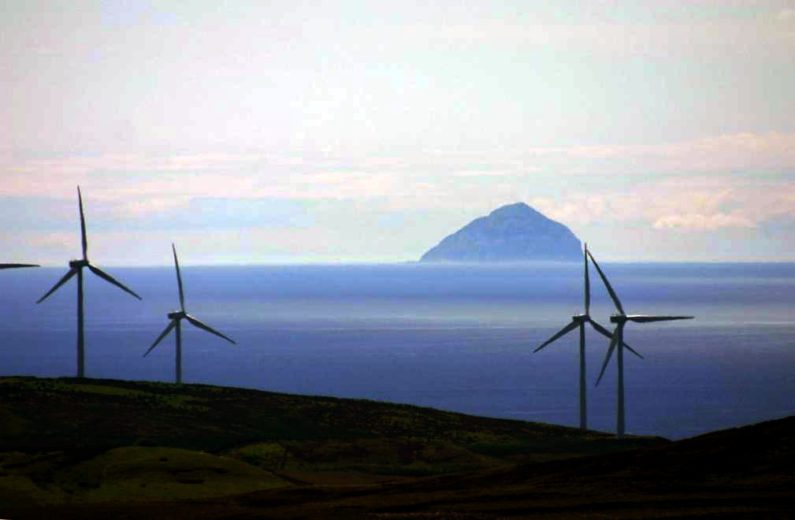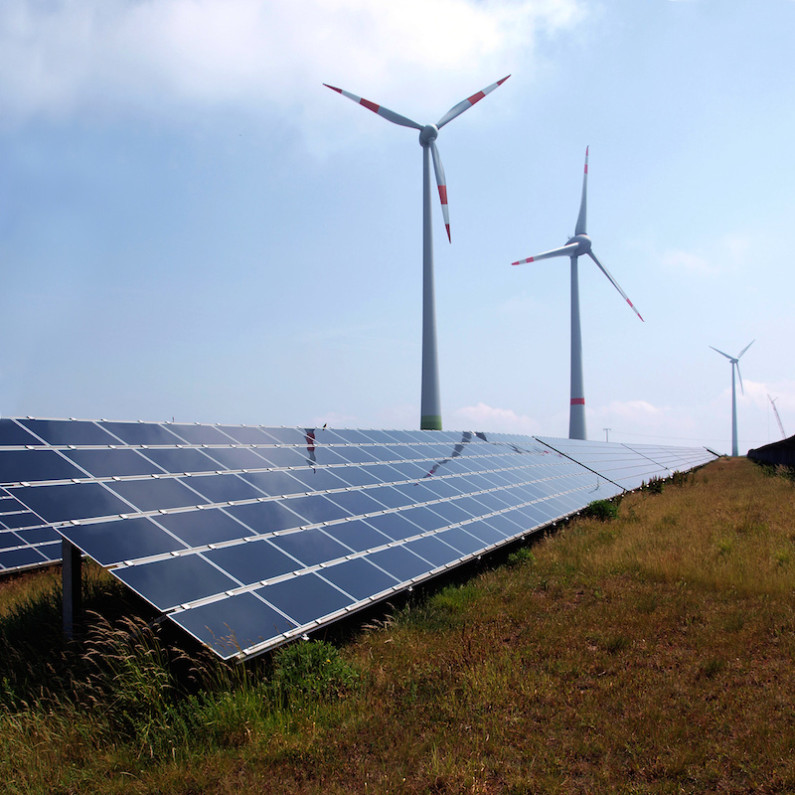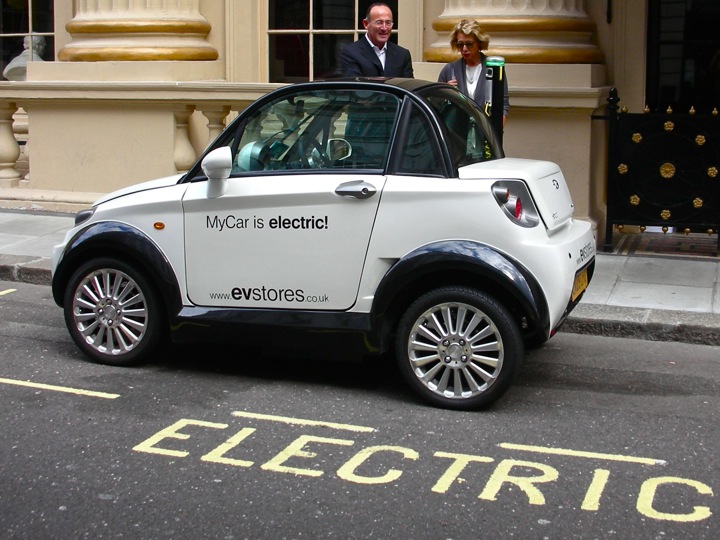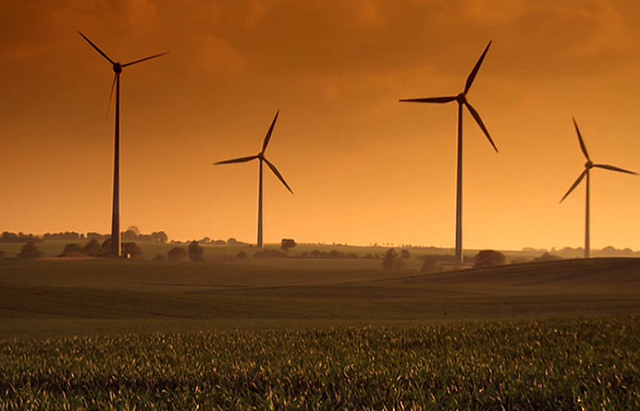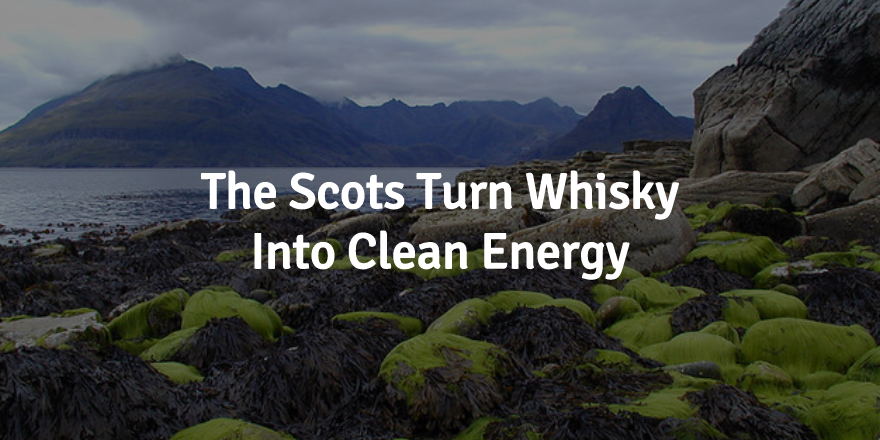Tom Brady posted a picture of Boston Celtics Point Guard Isaiah Thomas with the message:
“Its how you come back … Good luck tonight. We all have your back.”
With the Celtics down 0-2, the NFL champ figured the C’s needed a little motivation. Brady knows this is where Boston thrives, from behind. (more…)
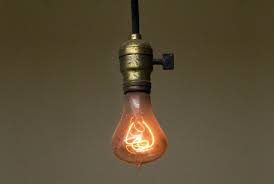
Light bulbs are an ubiquitous part of life that we give little thought to unless they go out, or we are perusing the latest aisle stack of bulbs on sale at Home Depot. So what’s the future of light in our homes and businesses? We may end up full circle, or using light bulbs at all may become obsolete.
As you probably realize, the incandescent bulb, the light bulb as we knew it for decades, has been forced out of existence by the Federal government imposing energy standards on it that it could not meet. By 2020 there will be no manufacturing of incandescent unless there is some drastic innovation in their design.
CFL bulbs were the first substitute to rush into the market. These ugly, mercury filled, slow warm up, beauties far surpassed the efficiency of incandescent but at a higher price. If you want some scary reading just check out the instructions for cleanup and disposal of a broken CFL bulb. You may just want to call a hazmat team to deal with it.
Now LED bulbs are making CFLs see the end of the road, as evidenced by GE’s decision to phase out production of CFLs in favor of LED. LEDs produce light at lower energy usage than CFL’s by a factor of almost 10, last 10 times longer than CFLs, and previously cost more than 10 times what a CFL cost, but those costs are dropping rapidly. Now that LED’s have dropped in price to 4 to 8X what CFL’s cost (and getting cheaper) the choice is a no brainer.
Ok that solves it right, LEDS are it? Not so fast. Researchers at MIT think they have solved the problem of energy waste in incandescent bulbs. Without getting too complicated it seems that the MIT brainiacs have found a way for the light energy to escape an incandescent bulb while the heat energy gets reflected back into the bulb to be released again as light making for a super-efficient bulb.
Beyond all this is the notion of no light bulbs at all. New technology that allows for the diffusion of light across surfaces without bulbs, think Kindle paper white, is in the works. Lasers, which are the basis of this new technology, are already being planned for use in BMW headlights. This laser light may be revolutionary. Imagine small fiber optics carrying light all around a home, or business, to be amplified in various places, or across various surfaces, without concern for sockets.
The future of light should be interesting. Of course they could just study the Livermore light bulb in California that has been burning for more than 100 years without interruption (you can watch it burn here). The Livermore light bulb is the centerpiece of a great documentary on planned obsolescence called The Light Bulb Conspiracy. If you have an hour I highly recommend it.
The future of Natural Gas in the US is a very cloudy picture. Natural gas production around the world continues to march ahead, despite low prices, and Major Oil players like Shell are moving to expand new markets for Nat Gas, but US regulation threatens that expansion in the US.
US Natural gas has been on a trajectory that seems good for most people over the last few years with lower prices, higher production, higher consumption, more exports and fewer imports. With the clean burning nature of Natural Gas I would have thought that the pace of use, and new markets, for Natural Gas would have been much faster. Projections for new natural gas cars and filling stations seem never to achieve rosy projections, and millionaire T Boone Pickens attempts to get the government to subsidize the market for Nat gas truck engines has fallen flat. You would think that Natural gas would assume the role that many have called for, that of in making it a cleaner “bridge” to the future of energy. Seemingly solar and wind are not ready for prime time and Nat gas seems the logical choice to get us to a day in the future where alternative energies take over. So why the hesitation?
US natural gas has a problem. The “never fossil fuels” crowd. This “never fossils” camp fears that Natural gas will replace oil and entrance itself in the energy structure leading to slow development of alternative energy. President Obama plays to this crowd. As other governments are out there are making deals to expand gas markets (Russia to China, Iran to Europe) the US is contemplating strict methane release standards (some say a solution looking for a problem) and fracking bans. This resistance by our government is futile and counterproductive. The natural gas future is here and moving forward, whether the US holds its breath and turns blue or not. There are great dividends to be gained in the natural gas future, like replacing dirty coal energy production in in China. Gas will be the bridge to the next energy future of the world. Let’s not burn the bridge prematurely in America.
All countries in the European Union (EU) are required to meet certain energy consumption targets each year in an effort to conserve energy and reduce our carbon footprint. Countries all over the world are already experiencing the devastating effects of climate change as we see glaciers shrink, plants and animals dying out early, and rivers and lakes disappearing well before they should. Scientists are already concerned about the effects of global climate change in the near future, assessing the extent of climate change in different environmental systems and ecosystems.
EU Countries Commit to Using More Renewable Energy Sources
Many EU countries are taking the lead on using renewable energy as a primary or secondary source of energy for many industrial and economic activities. According to the European Commission, renewable energy can be produced from several sources. These include wind, solar, hydro, tidal, geothermal and biomass. The goal is to make energy production more sustainable and less dependent on fossil fuels — the longtime fuel source for most companies in the EU.
EU national action plans include renewable energy targets for different sectors, the planned mix of different technologies, any national policies they are developing to better use biomass resources, and measures they are taking to be compliant with EU sustainability criteria. The most important sources in the EU-28 was biomass and renewable waste, according to the latest renewable energy statistics.
How EU Countries Are Taking Steps Towards Sustainability
Thanks to the latest technological innovations and ongoing research studies, EU countries have created renewable energy action plans that outline exactly how they are making use of today’s renewable technologies and meeting their targets in upcoming years. In 2020, for example, each country has committed to reaching national renewable targets — Sweden has committed to having 49% of its energy sources coming from renewable technologies by 2020. Overall, the EU is right on target to meet 2020 goals with total energy consumption projections hovering right around 15% in 2014.
Breaking down the countries who are on track to meet their 2020 targets, we see that Norway committed to 67.5% and was right at 65.5% in 2013. Sweden, Latvia, Finland, Austria and Denmark are extremely close to their targets while Ireland, the United Kingdom, the Netherlands, Malta and Luxembourg still have some work to do. According to the latest progress reports, only France and the Netherlands failed to meet their 2011/2012 targets — mostly due to lagging energy development initiatives and technical barriers for installing and using sustainable technologies.
One of the most significant changes in the past few years was the creation of the European energy union in 2014. The union was formed to “ensure secure, sustainable, competitive and affordable energy”, according to Eurostat. In 2015, we saw the European Commission move forward with an official climate change policy which included the strategy of decarbonizing the economy.
What Can We Expect from EU Countries in the Future?
Reports reveal China is still the world’s biggest clean energy investor and Asia has been investing heavily in renewables in Europe recently — the first time in 2015, according to Bloomberg. However, investments plummeted last year which has knocked EU countries out of the front lines as a global leader in renewable energy. EU countries still have time to reach their 2020 targets, however, and will continue to work towards cleaning up their sources of energy supply with technological advancements and careful planning.
As the world continues to invest heavily in renewable energy resource development and adopt sustainable practices to fuel the economy in different countries, many countries in the EU are taking the lead on innovation, development and implementation of renewable energy systems. Reducing our carbon footprint and encouraging innovation in the ‘green’ space are high priorities for EU members and today’s efforts will play an important role in our futures, and the future of the our planet.
Renewable energy has been a hot political topic for some years, and the symbolism behind renewable energy has continued to drive political polarization. How dire the issue of renewable energy is subjective to party lines.
On the Democratic side, President Obama promised a move towards renewable energy, since the beginning of his first term has and the proposal of the Clean Power Plan would realize much of his promises. But, this plan has caused a juggernaut of political grandstanding, court battles, and a slew of angry conservatives. The Clean Power Plan would require that states submit their move towards reducing emissions of greenhouse gases to the EPA which has caused a storm of criticism from the right. The EPA advanced with plans to regulate greenhouse gases in power plants and petroleum refineries in 2011 and saw the House Republicans going on the offensive to block the move. And conservative states continue to fight.
According to Robert Walton’s Utilities Drive newsletter, 24 States (mostly the Red States) filed lawsuits against the EPA to block the bill:
<blockquote>In total, states opposed to the rule include: Alabama, Arizona, Arkansas, Colorado, Florida, Georgia, Indiana, Kansas, Kentucky, Louisiana, Michigan, Missouri, Montana, Nebraska, New Jersey, North Carolina, North Dakota, Oklahoma, Ohio, South Carolina, South Dakota, Texas, Utah, West Virginia, Wisconsin and Wyoming. </blockquote>
This turnout against the bill is relevant because the number of states involved in the melee is unheard of said Joe Stanko, an attorney at Hunton & Williams, “I can’t recall a Clean Air Act rule, or other EPA rule, that has 44 states in the mix.”
Interestingly, more than 10 years ago, President George W. Bush signed the Energy Policy Act of 2005energy bill that was supported by then Senator Obama (D-III) to the chagrin of environmentalists. The bill was the first since the mid-70s that addressed fuel-efficiency regulations in automobiles by 40 percent – with a blending of ethanol in the U.S. fuel supply by 2022. The federal tax credits initially credited solar usage, but the Extension Act of 2008 extended the credit to wind energy and geothermal heat. Subsequent provisions included gave an extension credit for another eight years (which runs out at the end of 2016).
With the credits to expire in December of this year, though a commercial 10% will continue, the reps at the House may kill any further extensions. However, not all conservatives are taking affront to this pro-renewable move. The Tea Party has made unusual bedfellows with environmental groups. Debbie Dooley, the national coordinator for Tea Party Patriots and co-founder of the Green Party Coalition has come out against conservatives’ pushback towards renewable. Said Dooley of Georgia, “They [conservatives] neglect to mention billions of dollars that the fossil-fuel industries have received,” she said. “They cherry-pick their principles.”
Tom Morrissey, former Arizona state Republican Party chairman calls the Tea Party leaders “knuckleheads” for their stance on the issue saying it is a national security issue. “If we can keep one dollar from going to people who are killing our kids in Afghanistan, it’s a good thing — and I feel that’s what solar energy does.”
Regardless of the out-fighting or in-fighting, truth is that solar power is the fastest growing and most divisive source of energy and will no doubt bare its head come next election.
Whether for home solar panels or electric vehicles, it’s common for governments to offer consumers subsidies for buying and using sustainable products. Unfortunately, it’s an imperfect process: given the uncertainty of market demands, it’s difficult to project numbers that correlate accurately with sales.
Why settle for inaccurate, ineffective subsidies? Shouldn’t there be a better way to calculate them? The short answer is yes, and a new paper by MIT researchers sought to find out how. The paper shows that governments are likely to make subsidies too low due to market uncertainty, and ways in which it can be improved. Their intention was to design a better way to back clean technology.
The paper, co-authored by doctors and professors Georgia Perakis, Maxime C. Cohen, and Ruben Lobel, is called “The Impact of Demand Uncertainty on Consumer Subsidies for Green Technology Adoption.” It was published online by Management Science.
Governments typically provide subsidies based on overall adoption targets: the number of products they’d like to see adopted over a period of time, rather than a realistic projection. Since cleantech products are usually new, it’s hard to know whether the demand will be huge or non-existent without a crystal ball.
Higher subsidies?
To figure out better model for subsidies, the project examined existing products and their subsidy levels to determine whether the subsidy was effective. They concluded that in most cases, the subsidy should have been as much as five times higher to kickstart sales.
Higher subsidies, the authors say, is critical for cleantech product launches because it helps sell products faster and at a higher volume. These increased subsidies should pay for themselves, they say, because of the estimated savings in the larger context by preventing environmental damage and the costs associated.
The paper found that higher subsidies would drive the adoption of green technologies in their early stages, spurring their growth. As sales grow, the subsidy level could be adjusted accordingly.
The research has been called “important and timely” by experts, but not all are on the side of subsidies for innovation. Subsidies, the contrarians say, can put undue strain on government finances and are unable to respond to market changes, which can lose investors money. Still, I remain optimistic about overall adoption of new clean technologies: if there is value in subsidies for the earth and for consumers, and accuracy is prioritized, it’s a win-win scenario.
Featured image: Tony Hall via Flickr
As the 2016 election heats up, net energy metering (NEM) is an issue that voters and candidates want to hear more of. In states like Nevada, the issue is especially pressing where the emerging industry continues to clash with public utility provider NV Energy. The two sides stand opposed over Nevada’s net-metering cap. NV Energy’s recent application for a three-part charge in the state has many up in arms. However, NV Energy contends that its application, which includes a credit reduction for solar customers, is necessary to address an “unreasonable cost shift” between the varying fields of consumers.
The first candidate to feel the pressure was Hillary Clinton. The Democratic candidate left many in attendance disappointed when the subject wasn’t raised during a recent stop in the state. With a growing focus on green initiatives and technology in the state, candidates stumping in Nevada should expect the issue to arise. While the Clinton momentum certainly won’t derail due her omission of the topic, it could impact their standing when it comes to primaries. With candidates offering a range of sentiments towards climate change and green practices, it will be interesting to see where candidates side in states such as Nevada.
An issue like net energy metering has the potential to be one of the proverbial boom or bust topics of this election cycle. A candidate must walk a fine line in satisfying one side of the aisle without completely isolating the other side. However, with candidates like Donald Trump and Bernie Sanders offering a dose of candidness in their speeches and plans other politicians may be pressed into taking a stronger stance than usual. While Hillary Clinton was able to not address the issue this time, there is a high likelihood that won’t be the case the next time she or other candidates stop in the Battle Born State.
Increased investments in renewable energy and green initiatives continue to impact the Earth well beyond the battle against climate change. Beyond leaving a greener planet for future generations, increased investments benefit the world over in several other key ways–and not just in the major nations. Thanks in part to lower price points, developing nations are seeing the benefits of the green boom as well.
The effects of investing in the environment is felt from Bulgaria to Vietnam and several countries in between. The International Renewable Energy Agency (IRENA)’s 2015 report on the sector revealed that 7.7 million people worldwide are working in the industry. That’s an 18 percent increase from last year, and 35 percent over the last two. As Adnan Z. Amin notes in his article, if you add hydropower to the statistics, roughly 1.5 million more jobs are added to the tally.
Furthermore, the uptick in employment and investment has primarily been spurred on by declining prices in green tech. As Amin notes, the cost of moving to a greener landscape has now, “reached parity or dropped below the cost of fossil fuels for many technologies in many parts of the world.” This shift is now helping these nations revitalize their economies through job creation, overall growth and increasing the quality of life for large amounts of citizens in these nations. Looking a slight bit into the future, IRENA’s report goes on to estimate that the sector could support 16 million jobs by 2030.
The Pew Charitable Trust’s findings back up IRENA’s statistics, showing that developing nations are, “attracting significantly more investment in [the] renewable energy sector compared to developed nations.” Of the renewable projects undertaken worldwide, $28 billion was invested in 10 developing nations. Solar power generated the most interest with $12 billion in investments during those years.
Diversity in investments creates a hopeful prospect that each nation will be able to thrive in its region without mass competition from neighboring nations.
Looking at the Pew results, we see that Kenya could become a major player in geothermal plant production, while Thailand may be a prime example of biomass production success. Soon enough, Vietnam could see itself as a leader in small hydropower after bringing in $1.2 billion of the estimated $2.1 billion invested in the sector between 2009 and 2013.
Just a quick glance at the industry’s recent events and you see how Pakistan’s investment in solar panels is reshaping its deserts. Joining Pakistan in the solar movement is Morocco and Oman, providing solar power potential to three key regions of the world. Additionally so, Thailand has its eyes set on becoming a regional bioenergy hub while Ukraine strives for energy independence.
The world stands to benefit significantly as Earth opens up further to renewable energy and planet conservation. With an ideal to preserve our planet, it is incredible to see residual benefits coming from the movement. If the initiative continues, and by all indications it will, we could see nations develop into regional and potentially global powerhouses. At the very least, these investments will hopefully provide dual relief for future generations in developing nations. If we as a planet can provide a better quality of life for its inhabitants through the environment and economy, that may be our ultimate win-win scenario.
Scotland uses whisky for more reasons than to imbibe it. Its £4.3 billion (US$6.8 billion) whisky industry provides year round access to a highly viable source of power. Highlanders take clean energy seriously and have found at least two ways to take their most popular export and make it renewable.
Rothes in Speyside Bioenergy Plant
This bioenergy plant uses whisky by-product to create power, so much power that it provides electricity to 9000 homes. The Rothes Project, a joint venture of Helius Energy Plc, Rabo Project Equity BV, and the Combination of Rothes Distillers Limited (CoRD), burns the “draff” (used grains in the distilling process) with wood chips to generate electricity.
50 of the 100 whisky distilleries are in Speyside so the by-products of Glenlivet, Chivas Regal, Grouse and 9 other whiskies are used at the plant.
Celtic Renewables
Edinburgh company Celtic Renewables, founded by Professor Martin Tangney, Head of Biofuel Research Centre at Edinburgh Napier University, has presented proof that they can transform distillery waste into biofuel. Celtic Renewables combines draff, barley which aids in fermentation, and pot ale (the yeast heated during distillation) to produce biobutanol. Biobutanol, a “drop-in fuel”, can be introduced to a car’s gas tank without conversion and blended with diesel and biodiesel for planes. This bio-fuel generates clean energy for cars and planes and is a direct substitute for fossil fuels.
Though the developments with whisky as energy are remarkable, Scotland also uses clean energy in the form of wind, wave and tide power. In fact, the country’s renewable generation is approximately 32% of UK’s total renewable generation and 40.3% of Scotland’s electricity came from renewables as of 2012 (not just from spirits). And with approximately 3 million tons of whisky waste by-product discarded by the industry each year, whisky serves as yet another, ingenious source of clean energy for the Isles.




